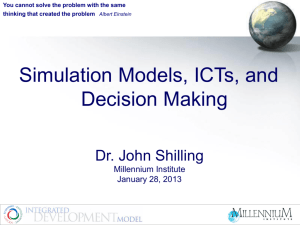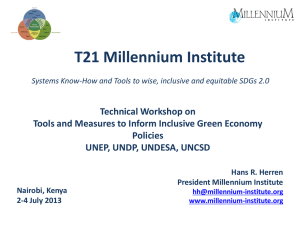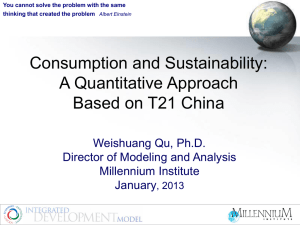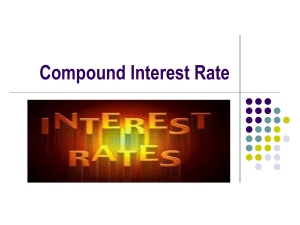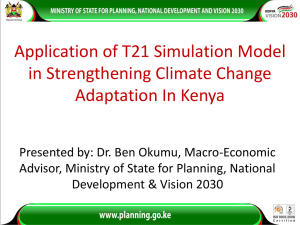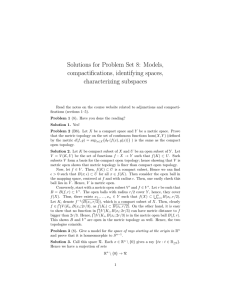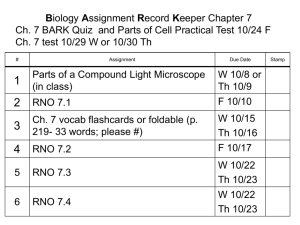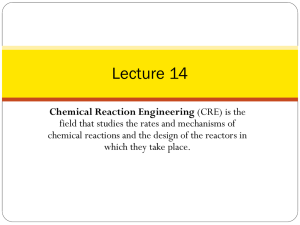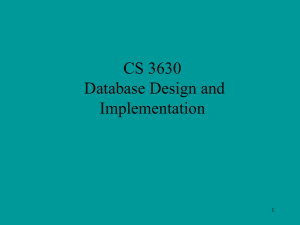System Dynamics for Urban Sustainability Analysis, Mr
advertisement
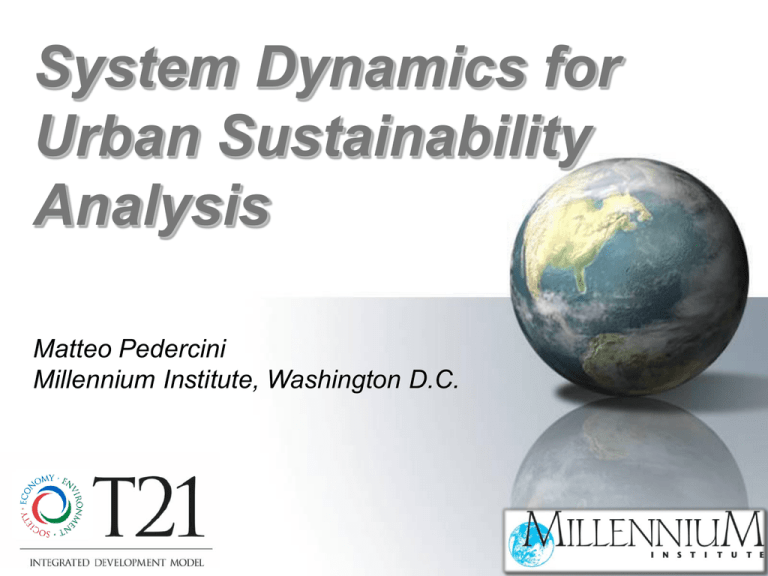
System Dynamics for Urban Sustainability Analysis Matteo Pedercini Millennium Institute, Washington D.C. Overview 1. Introduction to the Millennium Institute 2. System Dynamics (SD) for urban planning 3. T21 integrated SD model 4. Prospective for urban application of T21 5. Conclusions 1 SD for Urban Planning Millennium Institute on the Map T 21 Countries MI Partner MI Head Office M 3 Countries MEG Countries 2 SD for Urban Planning What is System Dynamics? stock flow Feedback Loop 2 SD for Urban Planning Brief History 2 SD for Urban Planning Brief History 2 SD for Urban Planning A Current Example 2 SD for Urban Planning Strengths of the Approach Non-Linearity 1 0.9 0.8 0.7 0.6 0.5 0.4 0.3 0.2 0.1 0 0 Accumulation 0.1 0.2 0.3 0.4 0.5 0.6 0.7 0.8 0.9 1 2 SD for Urban Planning Strengths of the Approach Input ??? Output 3 Overview of T21 Focus of Threshold 21 • Support policy analysis on mid-long term development issues from an integrated perspective • Global, regional, national, (urban) challenges: Food security and poverty Climate Change and natural disasters Resources, emissions and sustainability Equity and vulnerability 3 Overview of T21 T21 – Core Structure 3 Overview of T21 Integration: the leading principle MI’s T21 applications are grounded in the principle of Integration: (1) Integration of social, economic, and environmental dimensions of development (2) Integration of knowledge and input from different sources and stakeholders (3) Integration of planning instruments across sectors, time horizons, and spatial scales 3 Overview of T21 Example: National Strategic Plan Multiple goals in multiple sectors: • • • • • • • Macroeconomy Agriculture Industry Poverty Infrastructure Education Health Vision 3 Overview of T21 Example: National Strategic Plan What policy impact/contribution from each? • • • • • • • Macroeconomy Agriculture Industry Poverty Infrastructure Education Health Vision 3 Overview of T21 Example: National Strategic Plan What interactions across sectors? • • • • • • • Macroeconomy Agriculture Industry Poverty Infrastructure Education Health Vision 3 Overview of T21 Example: National Strategic Plan How much draw on resource base? • Macroeconomy • Agriculture • Industry • Poverty • Infrastructure • Education • Health Vision and Sustain ability 3 Overview of T21 Stakeholder Fora 3 Overview of T21 Causal Mapping rural poverty good governance+ participation in + policy processes farmers organization arable land - + land tenure planning for land use + access to basic health care infrastructure + + + - + + + literacy + rate - - + population + + + + + total factor productivity + + + + + - production + food - + employment + + food availability- entrepreneurial skills / marketing information + + diversity of food + food preferences training on entrepreneurial skills + preharvest losses + + inputs applied knowledge and technology + + energy access - pests and diseases input prices information knowledge and technology + research and + development + + - climate change food losses + storage capacity - Legend Priority themes local regional export / trade bio pesticides sustainability of crops and livestock extension + early warning systems income loss due to preharvest loss + capital + market access + availability of + water nutritional value + + + natural resources mechanisation + + arable land per farmer fertilizer + + labour force + + - chemical pesticides + gender parity + water harvesting income generating activities + + + agriculture value addition / processing industries access to productive resources + - family planning cultivated land + locally sources safety net safety net external food aid + + ++food access food prices income + -+ food and nutrition security + + access to education + + security / absence of violence - access to affordable finance + + access to land + investment +- + + life expectancy stunting rate - + urbanization risk insurance Example for policy action 4 T21 for Urban Planning Framework and Challenges • Scaling and adapting T21 to urban level • 100 Smarter cities – application with Huangshi and Xiamen • Treatment of spatial dimension • Data availability • Capacity development and institutionalization 5 Conclusions Summary T21 is an integrated simulation model that helps managing complexity in policy-making: • Based on system dynamics • Support open and inclusive planning • Facilitate the identification of effective policies • Integrates social, economic, and environmental factors T21 – Urban Planning Thank You for Your Time www.millennium-institute.org mp@millennium-institute.org

